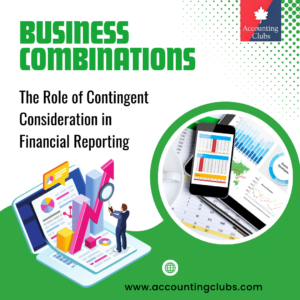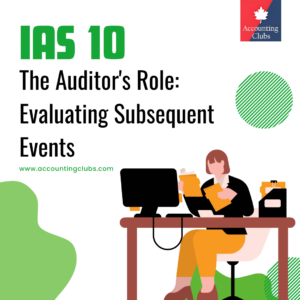Chapter 2: Key Managerial Personnel and Employees
Key management personnel
Key management personnel are those persons having authority and responsibility for planning, directing, and controlling the activities of an entity, directly or indirectly, including any director (whether executive or otherwise) of that entity.
IAS 24 states that a person is related to the reporting entity if that person “is a member of the key management personnel of the reporting entity or a parent of the reporting entity” (emphasis added). Therefore, a party is related to an entity if the party is a member of the key management personnel of any of the entity’s parents, i.e., its immediate, intermediate, and ultimate parents.
Individuals other than directors may be key management personnel
Individuals other than directors may fall to be classified as key management personnel, according to the degree of their authority and responsibility. Therefore, the explicit requirement to disclose the remuneration of key management personnel may result in the disclosure of the remuneration of individuals other than directors.
It is usually the case that those with authority and responsibility for planning, directing and controlling the activities of the group are the board of directors of the parent. However, key management personnel might in some instances include directors of subsidiaries who are not directors of the parent and senior managers who are not directors; for example, if an entity’s board is entirely comprised of non-executive directors, it is possible that the most senior executives would also be regarded as key management personnel.
Overseas subsidiaries with no directors based in overseas locations, a ‘general manager’ might be regarded as a key management personnel of the subsidiary.
When an entity has a major trading subsidiary that represents a substantial proportion of the group, the management of that subsidiary might be regarded as key management personnel of the group, but it would be necessary to have regard to the autonomy of the management team and whether all major decisions were subject to the approval of the parent’s board.
Key management personnel are usually permanent members of staff. However, this is not a requirement of the Standard; consequently, key management personnel could also include seconded staff or people engaged under management or outsourcing contracts.
Do an entity’s key management personnel include non-executive directors and members of its supervisory board?
Yes; ‘key management personnel’ includes “any director (whether executive or otherwise)”. The term ‘or otherwise’ is intended to cover non-executive directors and supervisory board members, as well as those who have responsibility for the management and direction of a significant part of the business without holding the title ‘director’.
Non-executive directors’ decisions are subject to governmental approval
The non-executive directors of entity A are appointed by a government minister. They are involved in planning and financing decisions, such as approval of budgets and contract negotiations, together with the executive directors. Final approvals are required from the minister before their decisions can be executed.
Entity A’s non-executive directors are key management personnel, even if their decisions are subject to the approval by the minister. Non-executive directors have the authority and responsibility for planning, directing, and controlling entity A’s activities. The minister would also be a related party, because he/she has control, joint control, or significant influence over entity A, being involved in the approval of key planning and financing decisions.
Does the term ‘key management personnel’ include directors of another group company?
No; the term ‘key management personnel’ does not include directors of the entity’s parent(s), subsidiaries, or fellow subsidiaries, unless those directors have a role in directing the entity’s affairs.
The entity is only required by IAS 24 to disclose payments to a parent’s key management personnel, as its key management personnel compensation, to the extent that the payments relate to services provided to the entity.
The key management personnel of any of the entity’s parents (that is, immediate, intermediate, and ultimate parents) are related parties of the entity. Transactions between the entity and those persons are separately disclosable.
Divisional managers
An entity has two equal-sized operating divisions. Each of the operating divisions is headed up by a ‘divisional manager’. Neither divisional manager is a director of the entity.
Each divisional manager is responsible for an operating division and reports to the board of directors on its performance. Divisional managers would fall within the definition of ‘key management personnel’ because they have authority and responsibility for planning, directing, and controlling approximately half of the entity’s activities.
Members of a management committee
A financial services entity has a board of directors that makes high-level decisions about the markets in which the entity operates. It delegates decisions about the products that should be offered within those markets, and the customers to whom those products should be marketed, to a management committee.
Members of the management committee, together with the board of directors, are key management personnel because the management committee has planning authority, directing, and controlling the entity’s activities.
Directors of subsidiaries as key management personnel of a group
A parent entity has three subsidiaries. The parent’s main activity is to coordinate its subsidiaries’ operations.
How should management disclose the remuneration of the subsidiaries’ directors in the consolidated financial statements?
A director of a subsidiary is not automatically a related party of the group. The director is a related party of the group if it is determined that he is a member of the group’s key management personnel.
The remuneration of any subsidiaries’ directors who are identified as key management personnel of the group should be disclosed, with the remuneration of the parent’s directors, in the consolidated financial statements.
Separate disclosure of the remuneration of the individual directors is not required under IAS 24 (although this might be required by local legislative requirements). Under IAS 24, this information can be aggregated.
Who would be classified as a dependant?
Dependants would include, for example, foster children, and, where they are dependent on the person or the person’s partner, could also include elderly and infirm parents, brothers, sisters, mothers-in-law or fathers-in-law, ex-partners receiving financial support, and even more distant relatives such as cousins.
Employees
Entity employs a director’s family member
Entities frequently employ the family members of key management personnel. The following questions arise:
- Is the family member a related party?
- If so, is such an employment a related party transaction?
- What disclosures are required?
- Is the family member a related party?
This depends on whether the family member is a ‘close family member’ of a person who is a related party. Key management personnel (including directors) and persons who have control, joint control, or significant influence over the entity are related parties of the entity. Their ‘close family members’ are also related parties of the entity.
‘Close family members’ include the adult children of the key management personnel (and their spouses), even if they are not members of the same household and even if they are financially independent. It also includes dependants of key management personnel.
- If so, is such an employment a related party transaction?
Yes. A related party transaction is the transfer of resources, services, or obligations between the reporting entity and a related party, regardless of whether a price is charged. So, the provision of employee services is a related party transaction.
- What disclosures are required?
If the transaction is considered material, the entity discloses The nature of the related party relationship. It discloses that the individual is a close family member of a member of key management. It will not usually be necessary to disclose the name of either the individual or the member of key management to whom he/she is related.
Information about the transaction is necessary for users to understand the potential effect of the relationship on the financial statements. The entity should disclose that it employs the family member. If the entity can show that the salary is at normal commercial rates, it would be helpful to state that fact. The amount of the transaction and any balance outstanding. Whether each of the disclosures above is material is a matter of judgment.
Factors that would contribute to them being, either individually or collectively, immaterial would include:
- The family member is employed in a junior capacity.
- He/she is one of several employees performing the same or a similar role and is paid the same salary as those persons.
- The employment is for a short-fixed term.
- The family member was recruited through the normal recruitment process.
- The salary received is not material to the net worth of either the family member or the member of key management.
For example, a large, listed entity might employ several students for a few months on either unpaid internship programs or in a junior capacity on salaries similar to the national minimum wage.
If the son or daughter of a director were employed on such a basis, through the same recruitment process, and on the same terms as all the other students employed, the entity might consider that this transaction does not require disclosure because it is immaterial (that is, knowledge of it would not influence the decisions that users make based on the financial statements).








